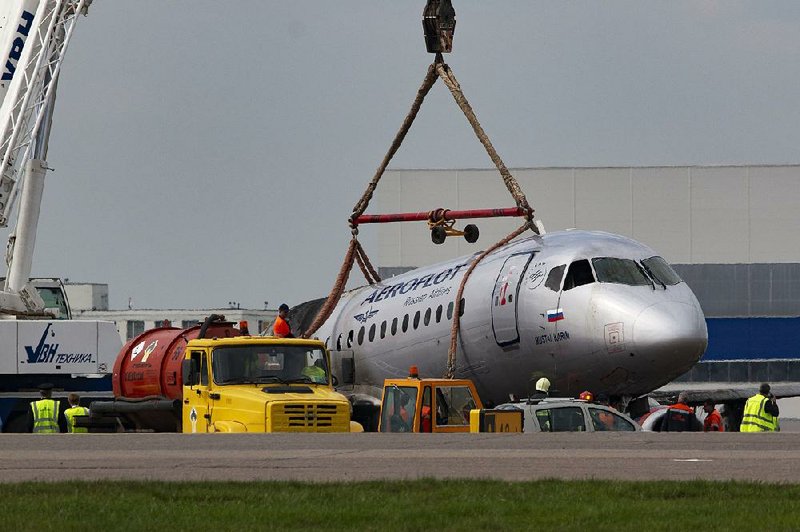MOSCOW -- A Russian airliner that took off from Moscow was airborne for 28 minutes before returning to make an emergency landing while still heavy with unburned fuel, which then ignited after a rough touchdown.
Flames quickly engulfed the aircraft, killing 41 of the 78 people aboard.
A day after Sunday's accident at Sheremetyevo airport, Russian news media quoted the pilot, Denis Evdokimov, as saying he followed procedures for landing with excess weight. But reports said the crew did not dump any fuel, as is common for flights that have to land soon after takeoff, to prevent the plane from being overly heavy.
The pilot said he was not certain why the plane landed hard. Video showed flames bursting from the jet's underside as it touched down, then raging across the rear of the Sukhoi SSJ100's fuselage within seconds as the airliner bounced down the runway.
"Everything happened right away, at lightning speed. There was a strong blow -- my eyes almost popped out -- a second was a little quieter, a third, and then smoke, and it started to burn immediately," survivor Marina Sitnikova was quoted as telling the magazine Snob.
When the plane came to a halt, some of the people aboard plunged down inflatable slides deployed from the forward part of the plane.
Some of those who escaped were carrying luggage, raising concerns that grabbing their bags may have delayed an evacuation in which every second was critical.
"I do not know what to say about people who ran out with bags. God is their judge," survivor Mikhail Savchenko wrote on Facebook.
Evdokimov said the plane had lost radio communications because of a lightning strike, but it was not clear whether that precipitated the emergency landing.
A flight attendant said there was a sharp flash soon after the Aeroflot flight took off, bound for the northern city of Murmansk.
"We took off, got into a cloud, there was strong hail, and at that moment there was a pop and some kind of flash, like electricity," flight attendant Tatiana Kasatnika said in a video posted on YouTube.
Russia's main investigative agency said both of the plane's flight recorders -- data and voice --were recovered from the charred wreckage. Agency spokesman Svetlana Petrenko was quoted by Russian news agencies on Monday as saying that investigators were looking at three main possibilities behind the cause of the disaster: inexperienced pilots, equipment failure and bad weather.
Storms were passing through the Moscow area when the plane landed.
One survivor praised the plane's attendants for helping save him and others.
"It was dark and there was gas, very high temperature. They helped people out of there, helped them to descend," Dmity Khlebnikov said, according to the Komsomolskaya Pravda newspaper.
The SSJ100, also known as the Superjet, was heralded when it went into service in 2011 as a new phase for Russia's civil aviation industry. It was introduced as a replacement for outdated Soviet-designed aircraft.
But the plane has been troubled by concerns about defects in its horizontal stabilizers. Russia's aviation authority in 2017 ordered inspection of all Superjets in the country because of the problems. A Mexican airline, Interjet, grounded Superjets in December 2016 and later said it was phasing them out of the fleet.
Transportation Minister Yevgeny Dietrich said Monday that it was too early to decide whether to ground the planes in Russia, and Kremlin spokesman Dmitry Peskov said the decision was not within President Vladimir Putin's power.
Information for this article was contributed by Yuras Karmanau of The Associated Press.
A Section on 05/07/2019
